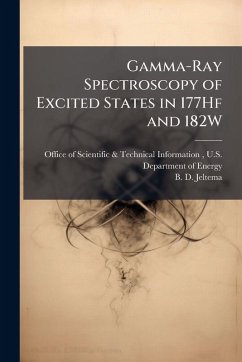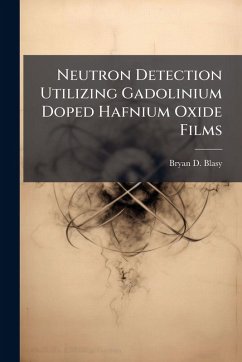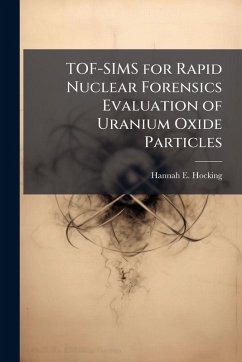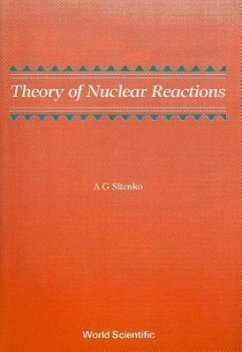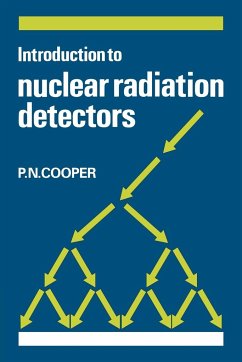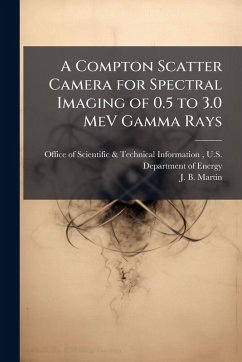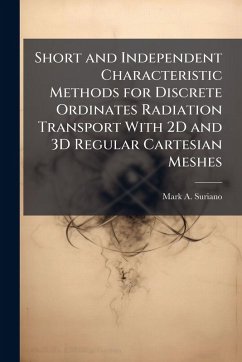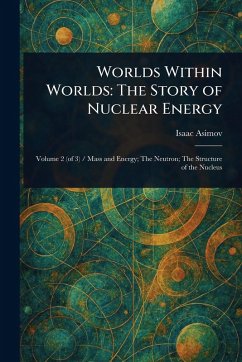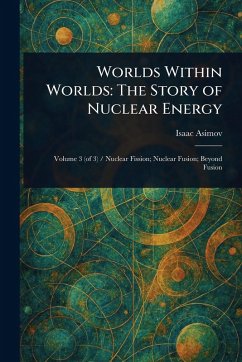
Detection of Special Nuclear Material With High Purity Germanium and Mercuric Iodide Gamma Detectors
Versandkostenfrei!
Versandfertig in über 4 Wochen
17,99 €
inkl. MwSt.

PAYBACK Punkte
9 °P sammeln!
The Defense Threat Reduction Agency (DTRA) contracted for two gamma radiation detectors: mercuric iodide (HgI2) and electromechanically cooled (EMC) high purity germanium (HPGe) to support arms control inspection efforts. This project investigated whether these detectors could measure the quality and quantity of special nuclear material (SNM), particularly Pu-239 for the treaty verification mission. The project investigated two areas of detector capabilities: 1) HgI2 and HPGe detector performance necessary to characterize the quality of plutonium and the presence of shielding materials and 2) ...
The Defense Threat Reduction Agency (DTRA) contracted for two gamma radiation detectors: mercuric iodide (HgI2) and electromechanically cooled (EMC) high purity germanium (HPGe) to support arms control inspection efforts. This project investigated whether these detectors could measure the quality and quantity of special nuclear material (SNM), particularly Pu-239 for the treaty verification mission. The project investigated two areas of detector capabilities: 1) HgI2 and HPGe detector performance necessary to characterize the quality of plutonium and the presence of shielding materials and 2) HgI2 and EMC HPGe detector performance degradation by high noise levels and EMC HPGe detector performance degradation caused by electromechanical-cooling. The first area studied the response functions of each of the detectors necessary to meet the detection objectives: measure the Pu-239/Pu 240 ratio to identify weapons grade plutonium and to identify a phony weapon. The second area of detector performance evaluated was the EMC HPGe detector's cooling capabilities and its effect on the performance of the detector. The results show that neither of the detectors was ideally capable of supporting DTRA's requirements. The HgI2 detector did not have sufficient efficiency or resolution to distinguish between Weapon Grade and Reactor Grade Plutonium. The EMC system suffered from grounding problems that degraded the resolution and efficiency. An initial study, evaluating the ability of detectors to determine the presence of a simulated tamper within the SNM physics package, showed great promise for identifying phony weapons. This work has been selected by scholars as being culturally important, and is part of the knowledge base of civilization as we know it. This work was reproduced from the original artifact, and remains as true to the original work as possible. Therefore, you will see the original copyright references, library stamps (as most of these works have been housed in our most important libraries around the world), and other notations in the work. This work is in the public domain in the United States of America, and possibly other nations. Within the United States, you may freely copy and distribute this work, as no entity (individual or corporate) has a copyright on the body of the work. As a reproduction of a historical artifact, this work may contain missing or blurred pages, poor pictures, errant marks, etc. Scholars believe, and we concur, that this work is important enough to be preserved, reproduced, and made generally available to the public. We appreciate your support of the preservation process, and thank you for being an important part of keeping this knowledge alive and relevant.



